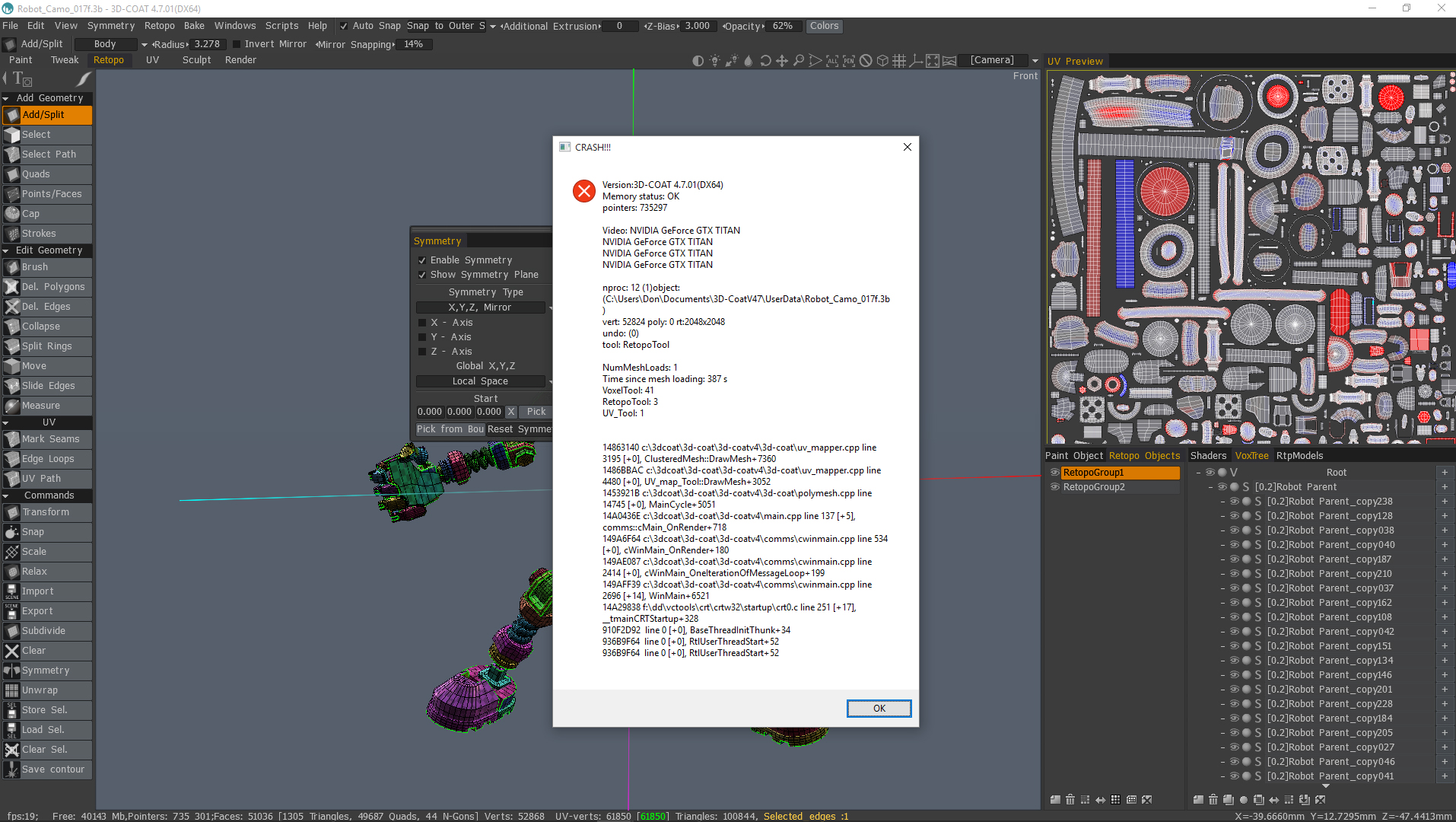
3d Coat 45 Crack
Mar 09, 2019 DOWNLOAD LINK - mega.nz/#!p0Z0kIpY!d_bsYPqoI4vM-3fRKUgb9ik5OXHdJbZbWWWttHu8glA. Household sharing included. No complicated set-up. Unlimited DVR storage space.
Hi Eric, I am sorry I only ask this question now as I thought I will be able to crack it by myself. Skachatj igru generali vojna v irake s torrenta free. I did follow the first method with Bitmap to Mesh but I don’t know how to follow the second one. The result looks very realistic. It just I can’t work it out. It must be I am missing some piece of knowledge. For instance how to: 1)“round out the surface with 200x200 png gradient” 2) “keep 200x200 pixel image geometry count down when converting to mesh.” Which extension/tool do you use with png as Bitmap to Mesh allow only bmp?
To try to answer your questions: 1.) “round out the surface with 200x200 png gradient” - For now, just try the same PDF I posted earlier which is 200x200 pixels. I can tell you how to make that in Photoshop but let’s come back to that. 2.) “keep 200x200 pixel image geometry count down when converting to mesh.” - There’s no need for any other extensions.
The Bitmap to Mesh extension’s name is a bit misleading as you don’t need to convert it to.bmp. Using the.png is fine.
See gif for the import process. For some reason it interpreted the transparent part of the png as a texture and therefore applied height to. This just adds an extra step that requires turning hidden geometry on and deleting the extra little outside bits we don’t want. My workflow using Image to Lithophane. I haven’t used Bitmap to Mesh, but it appears that it might be a superior method for this task.

)I begin by optomising the image in Photoshop, and while this video: is actually about 3D printing of lithophanes, it is best way to convey how to do this part. The principles behind how this works are also useful to know. )I then upload the image to Image To Lithophane, adjust the parameters to correspond with the job requirements.
In this case my Model Settings were: Size - 100mm (I kept it small to reduce the final triangle count, and as the resolution doesn’t need to be very high. The system will crash if very large meshes are requested.) Thickness - 3mm (Rembember the model will be scaled up later) Border - none Thinnest Layer -.8mm Vectors Per Pixel - 3 Base/Stand Depth - 0 Curve - 0 (Not relevant here, but if you use a flat surface and have a Curve of 360 you will create a hollow cylinder (as opposed to the “Solid Cylinder”), which you could use to create textured sides of your base. You would need to calculate circumference to height ratio, thickness, etc, and of course account for the high poly count - which maybe your Mac could do ok.